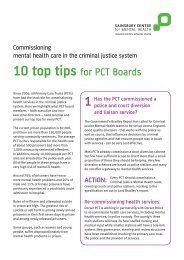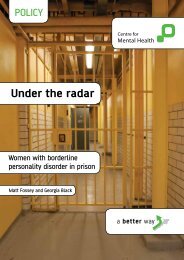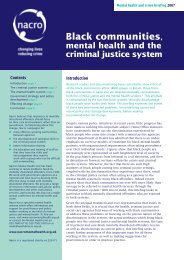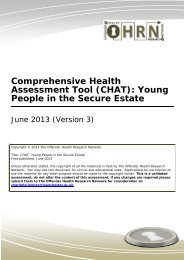Physical Control in Care Training Manual - Independent Advisory ...
Physical Control in Care Training Manual - Independent Advisory ...
Physical Control in Care Training Manual - Independent Advisory ...
You also want an ePaper? Increase the reach of your titles
YUMPU automatically turns print PDFs into web optimized ePapers that Google loves.
PHYSICAL CONTROL IN CAREDE-ESCALATIONWhilst the young person is be<strong>in</strong>g held by the staff dialogue with theyoung person should cont<strong>in</strong>ue. The No. 1 of the team should adoptthe role of team leader to co-ord<strong>in</strong>ate the de-escalation of the holds.The No. 1will be the first person to step away allow<strong>in</strong>g the head tocome up.3.7 RELOCATION PROCEDURESHow the young person is relocated will depend on:• The level of co-operation of the young person.• The risk posed by the young person.• The availability of staff.• Other activity with<strong>in</strong> the establishment.The supervisor must follow the guidel<strong>in</strong>es for a young person be<strong>in</strong>grelocated as previously described.3.7.1 Co-operativeIf the young person is show<strong>in</strong>g signs of calm<strong>in</strong>g then staff willendeavour to de-escalate the situation and relocate as per deescalationof Phase 2 holds.If the young person is to be seated with the holds still applied then theNo 1 of the team will release the young person’s head before theyoung person is sat down.3.7.2 Non Co-operativeIf de-escalation is not effective or the level of violence or non cooperationoffered is too great then a full relocation will take place. Inpreparation of this the young person’s room will be checked prior torelocation and all unauthorised or hazardous items removed <strong>in</strong>accordance with local policy.© National Offender Management Service National Tactical Response GroupJuly 201084
















